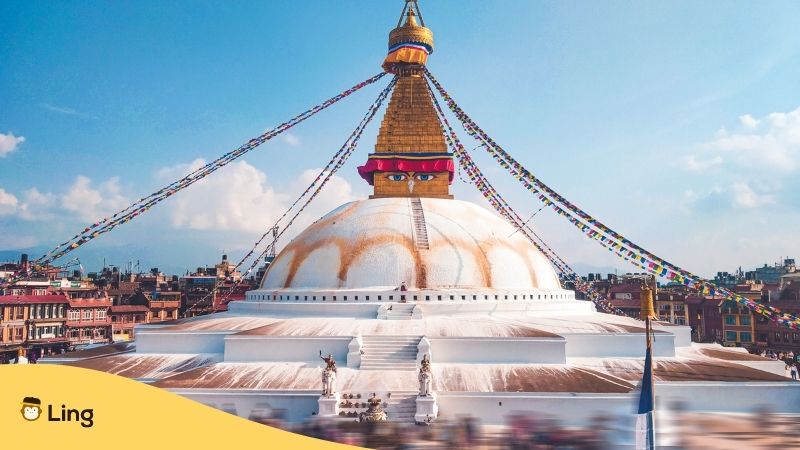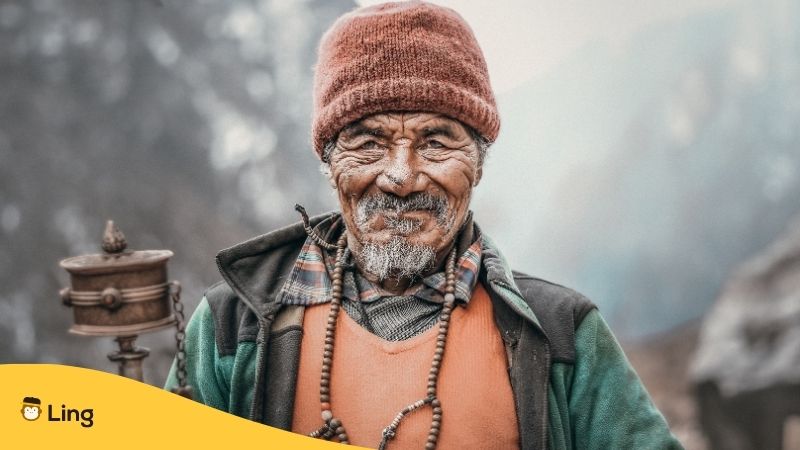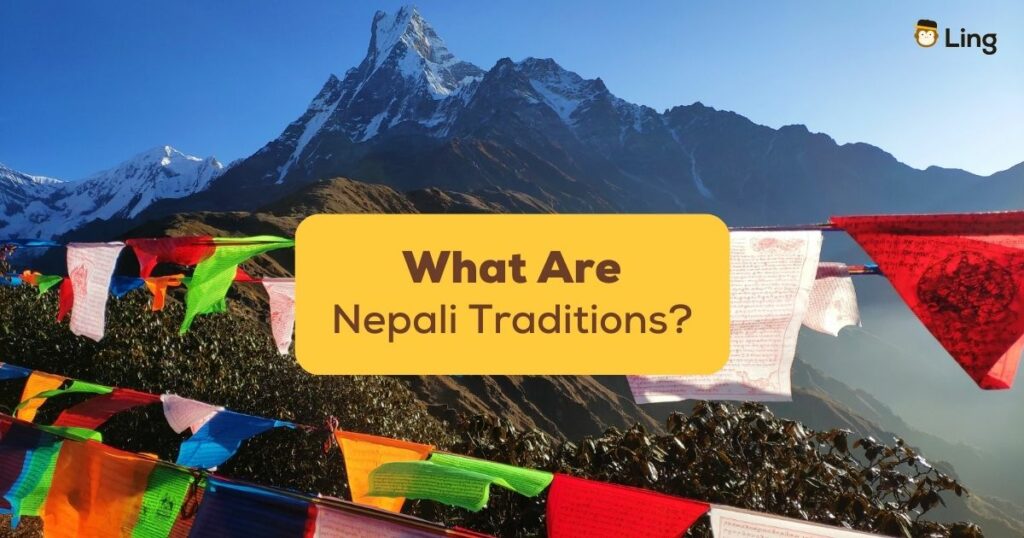Nepal, a land nestled in the lap of the Himalayas, is not just a land renowned for its breathtaking landscapes and adventure opportunities, but also for its cultural traditions handed down through the centuries. But what are Nepali traditions? What are the threads that bind the diverse ethnicities, languages, and communities in this beautiful Himalayan kingdom?
This time, we’ll take a trip into the heart of traditions in Nepali, discovering the customs, festivals, and practices of this miraculous mountain republic and realm of the Lord Shiva.
What Are Nepali Traditions?
Let’s take a look at what constitutes the traditions that have kept the Nepali society together and tightly bound since centuries.
Unity In Diversity: The Fabric Of Nepali Society
On their first visit, many are struck by Nepal’s incredible diversity. With over 120 different ethnic groups and languages, the country is a living testament to the coexistence of various cultures. This diversity is not only acknowledged but celebrated through myriad traditions that flourish throughout the nation.
Although Nepal is officially a secular country, its Hindu and Buddhist traditions are thought to be at least two thousand years old. Moreover, its animist ethnic groups are also merged into the caste system along with other religious groups. Within the caste system, high caste Hindus are at the top of the social pile with Dalits – those belonging to the lowest Hindu castes – at the bottom. But the lingua franca among all the groups is the Nepali language which is also the official national language.
Festivals: A Kaleidoscope Of Colors And Devotion
Nepali festivals are an embodiment of joy, spirituality, and cultural identity. Dashain, the biggest and most significant festival, is a celebration of the victory of good over evil. The festival, observed by Hindus, lasts for 15 days and involves a series of rituals, family gatherings, and feasting. Tihar, another prominent festival, is the festival of lights, where various animals like cows, crows, and dogs are worshipped for their significance in human lives.
Indra Jatra is a Kathmandu-based festival that showcases the rich Newar cultural heritage. The Kumari Jatra, a part of the Indra Jatra, involves a procession of the living goddess Kumari, a young girl chosen from the Newar community and revered as a living deity.
Nepal’s religious and cultural diversity is also highlighted by the celebration of Buddha Jayanti, marking the birth of Siddhartha Gautam, the historical Buddha. Lumbini, his birthplace, attracts thousands of pilgrims and tourists alike each year.

Sacred Spaces: Temples And Shrines
Nepal is dotted with numerous Buddhist monasteries, Hindu temples, and shrines, each holding cultural, historical, and spiritual significance. The Nepal Heritage Society lists well over 1000 architectural and archaeological sites of importance outside the Kathmandu Valley.
Swayambhunath, also known as the Monkey Temple, is another iconic religious site in Nepal. Perched atop a hill, this stupa offers a panoramic view of the Kathmandu Valley and is a symbol of harmony between various religious beliefs.
The Muktinath Temple, located in the Mustang district, is a revered site for both Hindus and those with the Buddhist philosophical ethos. The temple’s combination of fire and water sources is considered sacred by both faiths.
Artistry And Craftsmanship: Handmade Traditions
Nepal’s traditions extend to its craftsmanship, where artistry is passed down through generations. The intricate woodwork and carvings seen in temples, palaces, and traditional buildings reflect the dedication and skill of Nepali artisans. The Thangka paintings, depicting Buddhist deities and scenes, are not just visual art but also a form of spiritual practice.
The traditional weaving industry in Nepal produces exquisite fabrics like Dhaka and Dhaka products. These textiles, woven with precision and artistry, hold cultural significance and are often used in traditional attire.

Cuisine: A Gastronomic Journey
Nepali cuisine is a reflection of the country’s diverse geography and ethnicities and is very much part of the culture of Nepal. While “Dal Bhat” (lentil soup with rice) is considered a staple, each region adds its own flavors and specialties. Newars have their own unique culinary tradition, which includes dishes like “Yomari” (a sweet steamed dumpling) and “Bara” (a lentil-based patty).
Life’s Milestones: Ceremonies And Rites
Nepali traditions are deeply intertwined with life’s major milestones. Birth, marriage, and death are all marked by ceremonies that reflect the spiritual and social aspects of Nepali society. The Bratabandha ceremony, which signifies a young boy’s entry into adolescence, and the Pasni ceremony, which celebrates an infant’s first rice feeding, are examples of such rituals. Tantric traditions are also deeply rooted in everyday life.
Marriage rituals vary across ethnicities but often involve intricate customs, elaborate feasts, dance traditions, and traditional attire. Similarly, death rituals, such as cremations along the Bagmati River in Pashupatinath, hold deep spiritual significance.
Vocabulary Related To Nepali Traditions
| English | Nepali | Transliteration |
|---|---|---|
| Festivals | उपहारहरू | Uphaarharū |
| Cuisine | खानेपिने पदार्थहरू | Khānepine Padārthharū |
| Folk Music | लोक संगीत | Lok Saṅgīt |
| Traditional Dance | परम्परागत नृत्य | Paramparāgat Nṛtya |
| Handicrafts | हस्तकला | Hastakalā |
| Architecture | वास्तुकला | Vāstukalā |
| Clothing | परिधान | Parihān |
| Art and Sculpture | कला र मूर्तिकला | Kalā ra Mūrtikalā |
| Traditions | परम्पराहरू | Paramparāharū |
| Customs | रिति-रिवाजहरू | Riti-Rivājharū |
| Rituals | परिप्रेक्ष्यहरू | Pariprekṣyaharū |
| Languages | भाषाहरू | Bhāṣāharū |
| Heritage | धरोहर | Dharohar |
| Celebrations | उत्सवहरू | Utsavharū |
| Beliefs | विश्वासहरू | Viśvāshharū |
Challenges And Preservation
While Nepal’s cultural traditions have stood the test of time, they are not without challenges. Globalization, urbanization, and modernization have brought new influences that sometimes clash with traditional practices. The younger generation’s exposure to the world through technology and media is reshaping their perspectives.
Efforts to preserve these traditions include educational initiatives, cultural exchange programs, and increased awareness of the value of heritage. Organizations and individuals are working together to document and transmit knowledge about traditional practices, ensuring they aren’t lost in the sands of time.
Learn More About Nepali Culture With Ling
Learning a language like the Nepali language has to include some knowledge of the nation’s culture. With Ling, there are thousands of blogs covering all aspects of culture linked to more than 60 languages around the globe. Give Ling a try today at Google Play and App Store.



































































